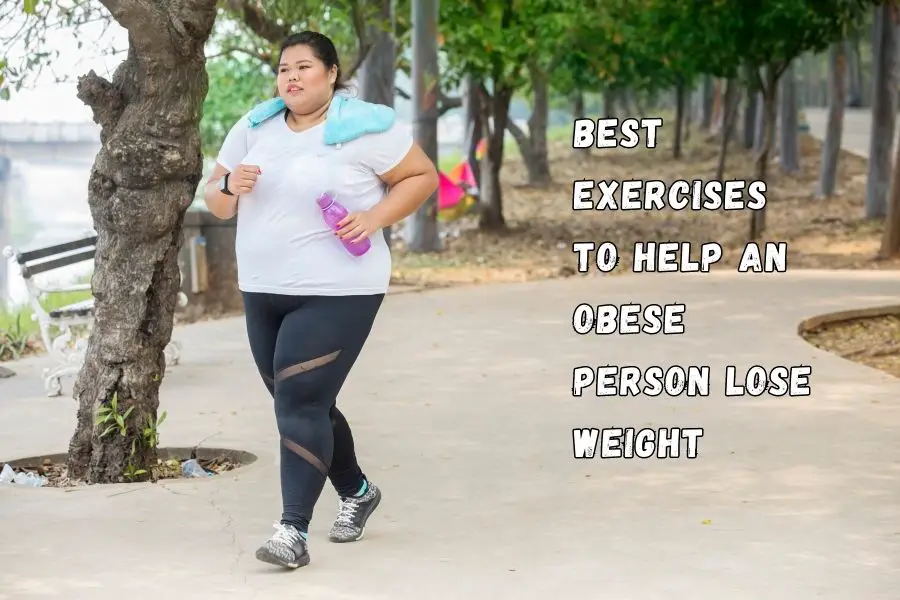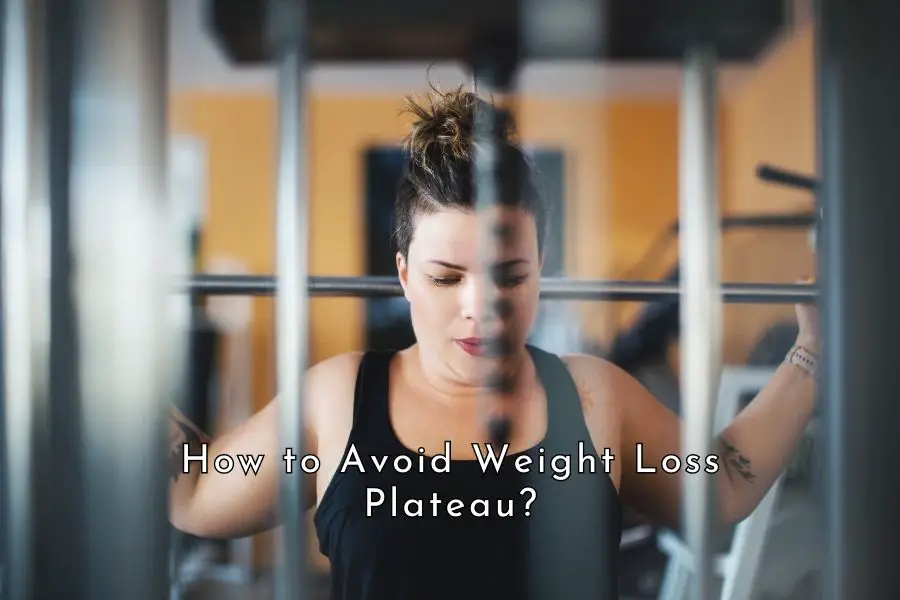Diet is the most important factor in weight loss but exercise can be extremely helpful if you do it right. If you are obese, you’ve got a lot of fat reserve to burn so every little bit counts. This post covers the best exercises to help an obese person lose weight and how to start them gradually and safely.
Why Diet Is Important but Exercise Can Also Help You Lose Weight
You cannot out-train a bad diet. You may be able to eat junk food, train excessively to create a calorie deficit and still lose weight but it will eventually catch up with you. You might look skinny or even fit and healthy on the outside but the consequences of a bad diet such as metabolic syndromes, heart disease, diabetes and even cancer will catch up with you later at some stage in your life.
Therefore, in order to lose weight in a healthy and sustainable way, it is an absolute must that you need to get your diet right first. It is critical that you choose a healthy diet that nourishes your body from the inside out and lay a good foundation for healthy weight loss later on.
The best diets for an obese person to lose weight, in our opinion, are a ketogenic diet and a carnivore diet. Many people have found weight loss success on both diets as well as improve their health and transform their lives. [1, 2]
In our opinion, the carnivore diet is a better diet than the ketogenic diet because its foods are nutrient-dense, free from plant toxins, and highly bioavailable. You can also generally stay in ketosis on the carnivore diet without the need to count macros carefully like on the ketogenic diet. However, if you prefer the ketogenic diet, it still can help you lose weight successfully and is generally a lot healthier than a typical Western style diet if you make animal-based food the centre of your diet and add a small amount of good carbs.
In addition to diet, exercise can help burn more calories and facilitate weight loss. If you never exercise before, taking up an exercise can help you burn a lot more calories. However, over time, your body will get used to the new active lifestyle, become more efficient at doing the same movements, and won’t burn as many calories as before. This is why people say that exercise is ineffective for weight loss. But you certainly can counter this natural adaptation by switching up your exercise regularly and use exercise to help you lose weight. [3, 4]
Not only exercise can help you lose weight if you do it right, it also offers a wide range of health benefits, including improved cardiovascular health, increased strength and endurance, enhanced mood and mental well-being, and reduced risk of heart disease, diabetes, and certain types of cancer. [5, 6, 7]
Starting an exercise routine can be challenging for an obese person due to:
- Physical limitations: Excess weight puts additional stress on the body, especially on the joints and muscles and this can make certain movements uncomfortable or painful, limiting the range of motion and overall mobility
- Lack of fitness: Obese individuals often have a lower level of physical fitness. This can lead to reduced stamina, cardiovascular endurance, and muscular strength, making physical activity more challenging and exhausting
- Emotional barriers: Fear of judgment or embarrassment in a public setting, low self-esteem, and anxiety about body image can all act as deterrents to starting an exercise routine.
However, where there’s a will, there’s a way. Below are the exercises that most overweight or obese individuals can engage in immediately and safely and begin to enjoy their weight loss and health benefits.
Best Exercises to Help an Obese Person Lose Weight
1. Standing
Sitting is the new smoking.
Sitting has been associated with so many health issues including heart disease, obesity, metabolic risks, certain cancers, and early death. [8, 9, 10]
If you have been sitting down most of the time due to the heavy weight you’re carrying, standing is a great form of exercise.
Standing requires you to use your core and leg muscles. You are also more likely to move about, shifting from leg to leg, and fidgeting than when you are sitting down. All these can add to more calories burnt in a day and a lot more calories in a year.
According to this estimate, by standing for 3 additional hours each day over the course of a year, you can burn up to 30,000 extra calories and 8 pounds of fat. That is the equivalent of running about 10 marathons.
In addition to weight loss, you will become fitter and healthier too.
So, if you are obese and find other exercises challenging, start with standing, it’s free, requires no training, and has very little risk of injuries.
Simply have a look at your weekly schedule for each week and find the opportunities when you can add a few more hours of standing each day. It may be a little hard at first but you will get used to it very quickly and become fitter. For example, starting with as a little as 10-minute standing intervals at first and increase the standing duration gradually once you become comfortable.
2. Walking
Walking is another great exercise to help an obese person lose weight.
While the gym is what many people first think of when they want to lose weight, research shows that people who walk 10,000 steps a day have lower BMIs and are generally healthier than those who do not. [11]
Walking is free, needs no training or equipment, and doesn’t put a lot of pressure on your joints.
You can also do it anywhere (at home, in the park, and in the bush). You can even walk on the spot at home if it’s raining outside or you are uncomfortable exercising in a public setting.
For some obese people who are not used to walking, it may be hard at first but if you can walk for 10 minutes, just do 10 minutes, have a few minutes rest, and repeat a few more times. Your endurance will improve if you keep a regular walking schedule.
Getting a basic pedometer is a good investment because it helps with setting goals and tracking your progress.
Begin by setting a goal that you think you can achieve easily – it will help with keeping you motivated. Setting a too challenging goal that you would struggle to achieve is not a good idea.
Start with as little as 2000 steps a day if you hardly walk much before and increase gradually over time. If you stand and fidget around for a few additional hours a day, the number of steps will add up very quickly.
3. Yoga
Yoga is a great exercise for an obese person because, as mentioned above, every bit of movement counts and adds up in the long run. Yoga doesn’t burn as many calories as running but it still burns a lot more calories than sitting in front of the TV or scrolling on your phone.
Mechanisms by which yoga may assist with weight loss or maintenance include the following: [12]
- Energy expenditure during yoga sessions
- Allowing for additional exercise outside yoga sessions by reducing back and joint pain
- Heightening mindfulness, improving mood, and reducing stress, which may help reduce food intake; and
- Allowing individuals to feel more connected to their bodies, leading to enhanced awareness of satiety and the discomfort of overeating.
Yoga also can potentially reduce stress and can help with weight loss. This is because stress raises cortisol. Consistent stress means elevated cortisol levels and this has been linked to weight gain. Your body tends to build up visceral fat when under stress. Your appetite is likely to be stimulated and you are also more likely to overeat. [13]
It is best to enroll in a yoga class and practice under qualified supervision. However, some obese or overweight people may be conscious of their body image and are hesitant to join a physical class. While there are people who are judgemental, most people are very nice and welcoming. Nevertheless, it’s one of the options and you don’t have to take it if you are uncomfortable.
There are a lot of free online classes that you can follow along at the comfort of your home if you don’t feel comfortable joining a physical class or there is a budget constraint.
However, there is a risk of injury with this approach. If you pull a muscle or hurt your back because of an incorrect posture, you might be unable to exercise for a few months afterward until you fully recover.
Remember to listen to your body and take it easy, getting fit and becoming healthier is not a race, but a journey.
4. Stationary bike riding
If you are severely obese, lack balance, and don’t feel confident enough riding a normal bike on the road, a stationary bike is a great starting point because: [14, 15]
- It’s a low impact exercise which doesn’t put much pressure on your joints
- It still strengthens your leg and core muscles
- It has a very low risk of injury, there’s no road hazards and no risk of falling onto the road and hurting yourself
- It still can burn a lot of calories and help you lose weight. An average person can burn about 250 calories for a moderate 30 minutes of riding on a stationary bike
- After you’ve become comfortable riding at normal speed, you can even incorporate high intensity interval exercise (HIIT) on a stationary bike simply by cycling as fast as you can for 10 seconds, rest for 30 seconds, and repeat a few times. This will help you burn even more calories
- You can do it any time and in any weather conditions.
You can later transition from a stationary bike to a normal bike and even swap the car for a bike trip to work and shops to help further with your weight loss goals.
5. Resistance training
An obese person can still do resistance training safely to improve muscle mass and help accelerate weight loss. This is because when at rest, muscles burn more calories than fat and other tissues. The resting metabolic rate of skeletal muscle was 12.6 compared to only 4.4 for adipose tissue and 11.6 for most other tissues. [16]
While you want to lose most of the fat reserve, you don’t want to lose muscles, therefore, it is all the more reason to engage in resistance training.
In addition to weight loss, resistance exercises have other benefits including better body composition, stronger bones, improved mobility and balance, improved cognitive function, better sleep quality, and increased self-esteem.
Resistance training is any kind of exercise in which your muscles are forced to contract against external resistance.
Examples of resistance training are:
- Exercises using resistance bands which are easy to do, low cost, convenient and you can use them for a total body work out
- Lifting free weights such as dumbbells, barbells and kettle bells or just big jugs filled with water or sand. Free weights are versatile, functional and effective and don’t cost much
- Lifting with weight machines. Weight machines are safer for beginners and better at isolating and training weaker muscles. They can complement free weight training for a complete body workout
- Exercises using your own body weight for example push-ups, chin-ups, squats, lunges and mountain climbing. These are very effective exercises that are free and you can do them anywhere even with little space.
For an obese person, it’s best to start resistance training by using resistance bands which have different levels of resistance (light, medium, heavy, and extra-heavy). You can always start with light resistance bands and progress forward as you become fitter.
Lifting free weights is also a great resistance exercise. You can start with lifting just 2kg dumbbells and progress to heavier weights. You can also carry the dumbbells while walking to give a bit more challenge to your muscles. If you can’t do resistance training while standing up, even sitting down on a chair and lifting those light weights is also an option.
Lifting with weight machines is also very safe. You can try out a couple of weeks at the gym and see if you like this kind of exercise or not.
With regards to exercises using own body weights, it’s best to do them under supervision. Though they are very effective and free, if you don’t have the correct forms, you are at risk of injuring yourself and a few months of not being able to exercise will demotivate you and derail your progress.
6. Water exercises
Water makes the body feel lighter therefore water exercise is another low-impact exercise suitable for an obese person.
Benefits of water exercises include: [17]
- Increasing calories burnt
- Preventing injuries
- Increasing the range of joint motion
- Increasing cardiovascular fitness
- Improving skeletal muscle strength and endurance
- Utilizing both upper and lower limbs
- Enhancing relaxation and psychological well-being.
Potential forms of water exercises include: [18]
- Swimming
- Aqua aerobic
- Aqua walking
- Aqua jogging.
Conclusion
If you are currently in the obese category, in addition to finding the right diet, you need to incorporate as many movements throughout the day as possible.
In addition to incidental exercises, the above exercises can help you accelerate weight loss.
Many people don’t lose a lot of weight with exercises because their exercises don’t have enough volume to make a difference and they tend to eat more because they have better appetites after exercise or think they deserve to eat more after a hard workout. Their bodies also adapt to physical exercise routines over time, become more efficient doing the same things and burn less calories.
Therefore, in order for exercises to make a significant positive impact on achieving your weight loss goal, you need to find ways to add volume to your exercises and be aware of compensatory eating behaviors. Either avoid eating snacks between meals altogether or allow yourself a fixed number of snacks a day even with the increase in the level of exercise. You also need to switch up your exercise routine once in a while by changing the activities or varying duration and intensity.
In addition, I think the most important factor in weight loss is consistency. You need to choose the exercises you enjoy and are most likely to stick to them in the long term.
Start small but stay consistent. Increase duration and intensity as you feel comfortable doing so. Also, remember you don’t have to compete with anyone but yourself.
Other posts you might be interested in:
How to Lose Weight Fast with the Carnivore Diet Part 1: Healthy Diet
How to Lose Weight Fast with the Carnivore Diet Part 2: Smart Exercise
How to Lose Weight Fast with the Carnivore Diet Part 3: Positive Mind
How to Lose Weight Fast with the Carnivore Diet Part 4: Action Time
Three Science-Backed Strategies for Fast Weight Loss
The Best and Most Healthy Way to Lose Weight and Keep It Off
How to Carnivore Diet While Traveling
Top 15 Tips to Lose Weight Fast with the Carnivore Diet
How to Lose the Last Few Pounds on the Carnivore Diet?
How to Avoid Weight Gain During the Holidays
Is Carnivore the Best Anti-Aging Diet Around?
What Are the Health Benefits of the Carnivore Diet?
Disclaimer: The information in this post is for reference purposes only and is not intended to constitute or replace professional medical advice. Please consult a qualified medical professional before making any changes to your diet or lifestyle. Please check out our disclaimer for more detail.





